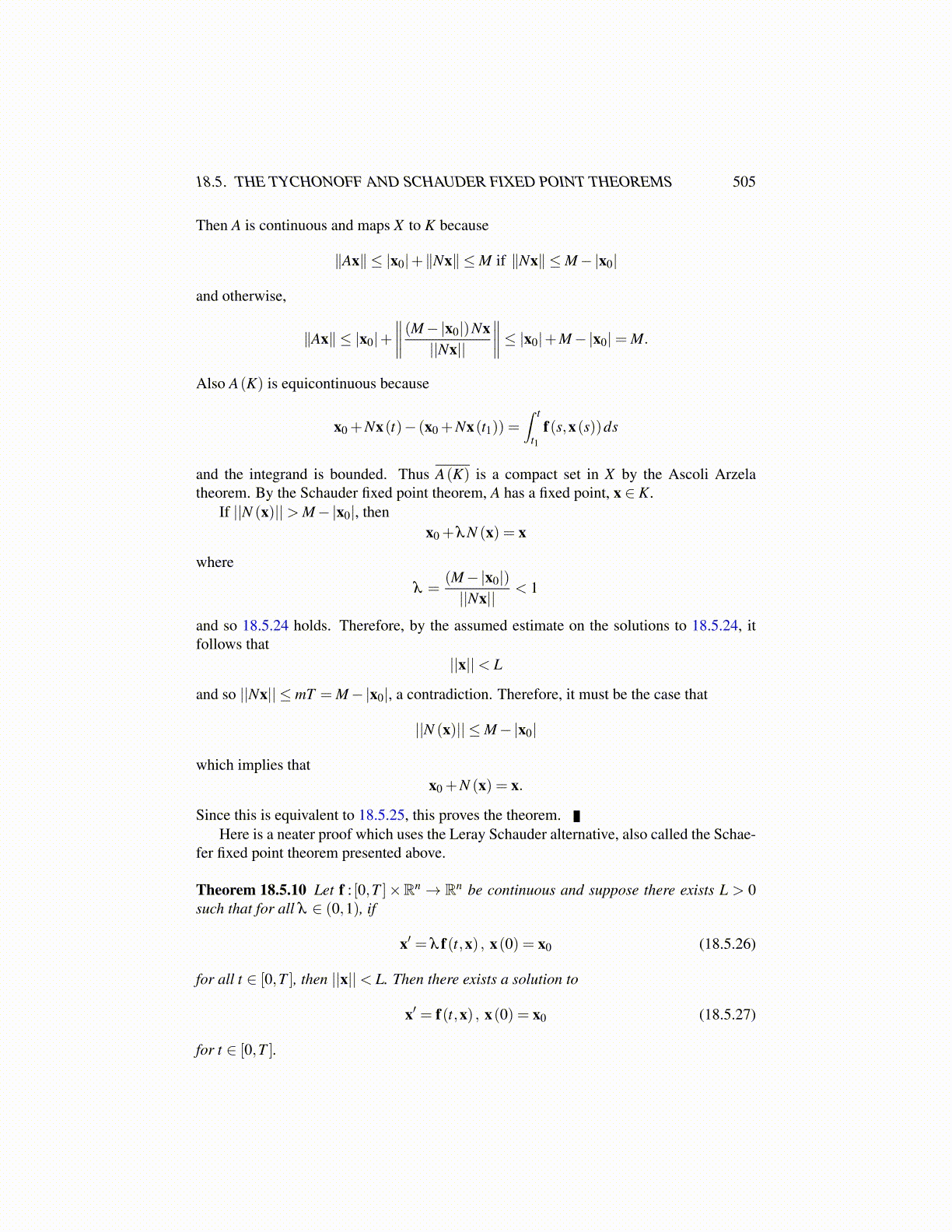
18.5. THE TYCHONOFF AND SCHAUDER FIXED POINT THEOREMS 505
Then A is continuous and maps X to K because
∥Ax∥ ≤ |x0|+∥Nx∥ ≤M if ∥Nx∥ ≤M−|x0|
and otherwise,
∥Ax∥ ≤ |x0|+∥∥∥∥ (M−|x0|)Nx
||Nx||
∥∥∥∥≤ |x0|+M−|x0|= M.
Also A(K) is equicontinuous because
x0 +Nx(t)− (x0 +Nx(t1)) =∫ t
t1f(s,x(s))ds
and the integrand is bounded. Thus A(K) is a compact set in X by the Ascoli Arzelatheorem. By the Schauder fixed point theorem, A has a fixed point, x ∈ K.
If ||N (x)||> M−|x0|, thenx0 +λN (x) = x
where
λ =(M−|x0|)||Nx||
< 1
and so 18.5.24 holds. Therefore, by the assumed estimate on the solutions to 18.5.24, itfollows that
||x||< L
and so ||Nx|| ≤ mT = M−|x0|, a contradiction. Therefore, it must be the case that
||N (x)|| ≤M−|x0|
which implies thatx0 +N (x) = x.
Since this is equivalent to 18.5.25, this proves the theorem.Here is a neater proof which uses the Leray Schauder alternative, also called the Schae-
fer fixed point theorem presented above.
Theorem 18.5.10 Let f : [0,T ]×Rn → Rn be continuous and suppose there exists L > 0such that for all λ ∈ (0,1), if
x′ = λ f(t,x) , x(0) = x0 (18.5.26)
for all t ∈ [0,T ], then ||x||< L. Then there exists a solution to
x′ = f(t,x) , x(0) = x0 (18.5.27)
for t ∈ [0,T ].